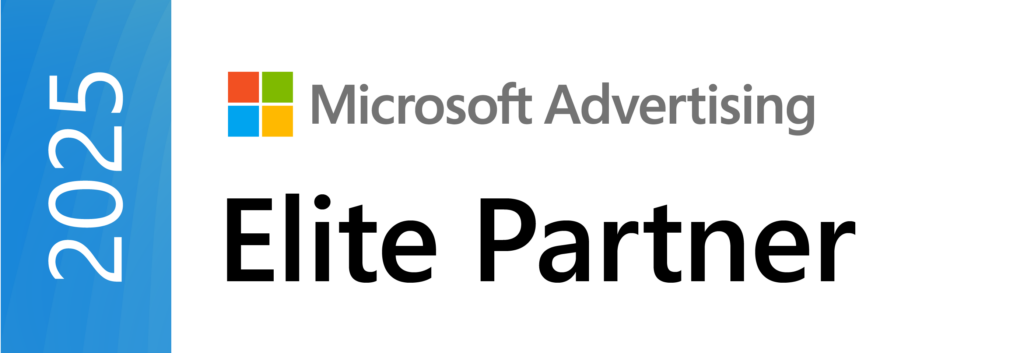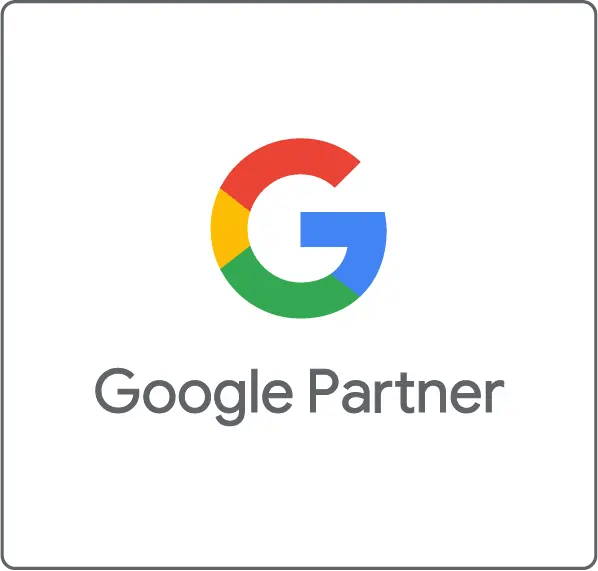The Competitive Edge of Continuous Experimentation
Leading brands in every industry are achieving significantly better website conversion rates by embracing a culture of continuous A/B and multivariate testing. The top 10% of organizations boast conversion rates above 11%, nearly five times the global average of ~2.35% . This performance gap is no accident – it’s driven by relentless optimization. A/B testing (comparing two versions of a page or element) and multivariate testing (testing many element combinations) enable data-driven improvements that provide a decisive competitive edge. As Amazon founder Jeff Bezos famously said, “Our success at Amazon is a function of how many experiments we do per year, per month, per week, per day” . High-performing companies treat their websites as living products, constantly experimenting to learn what really works for customers.
Crucially, systematic testing replaces guesswork with evidence. It mitigates the risk of making website changes based on hunches or HIPPOs (“highest paid person’s opinion”). Instead, decisions are validated (or invalidated) by real user behavior. The result is a cycle of continuous learning – even tests that “fail” to beat the control provide insights that inform the next hypothesis. In fact, fewer than 50% of experiments at Amazon or Microsoft produce a positive improvement on their target metric . But this is precisely why leading brands run thousands of tests: the occasional big win more than pays for many small losses. As Bezos notes, you only need a few home runs – one experiment with a 100× payoff can outweigh numerous minor strikeouts . This willingness to “swing for the fences” with frequent experiments translates into breakthrough innovations (e.g. Amazon Prime, Netflix’s recommendation engine) that competitors who avoid testing simply never discover.
Why A/B Testing = Better Conversions and ROI
Testing strategies give companies a data-driven path to higher ROI. By optimizing elements like calls-to-action, page design, forms, and personalization through iterative tests, businesses often see substantial lifts in conversion and revenue for relatively low cost. According to recent industry statistics, businesses that leverage conversion optimization tools typically see an average 223% return on investment . In one survey, 173 companies even reported over 1,000% ROI from their conversion rate optimization (CRO) efforts . The payoff comes from both incremental gains and occasional game-changing insights. For example, a Microsoft Bing experiment that tweaked the way ad headlines were displayed led to a 12% jump in revenue – worth over $100 million annually – for essentially a few days of an engineer’s work . That single A/B test turned a long-neglected idea into Bing’s biggest revenue-generating feature ever .
The business case for testing is reinforced by countless such wins. Google’s culture of experimentation is legendary: one famous test compared 41 shades of blue for the hyperlink color on Google’s interface. The winning blue – barely different to the naked eye – drove higher user click-throughs and added an estimated $200 million in annual ad revenue . It’s a perfect illustration that small changes can yield enormous gains when optimized through rigorous A/B testing. Netflix similarly attributes its success in engaging users to experimentation. The company has a 300+ person team dedicated to personalization and A/B tests; back in 2014, Netflix’s Chief Product Officer noted that a $150 million/year experimentation investment was yielding $500 million in value for the company . These returns come from continually fine-tuning the user experience – from the images and recommendations each viewer sees to the new features Netflix rolls out – all tested to boost engagement and retention.
Even traditional brands are seeing the ROI. GIS software firm Esri, for instance, used personalization and A/B testing with Adobe’s tools to improve its web experience and saw a 25% increase in conversions after its digital optimization program . Apparel retailer HanesBrands integrated its customer data with testing (via Adobe Target) and achieved a 41% lift in conversion by delivering more personalized, relevant shopping experiences . And in the non-profit sector, a recent digital revamp by Australian Red Cross using experimentation led to an 84% jump in conversion rate along with a staggering 2800% boost in online revenue within 6 months . These examples reinforce that whether the goal is sales, subscriptions, or sign-ups, testing-driven optimization directly translates to better conversion and higher ROI on marketing efforts.
Tools and Platforms Powering Top Brands
To execute these testing strategies at scale, leading companies leverage powerful A/B testing and personalization platforms. Many tech giants have built in-house experimentation systems – Amazon’s “Weblab” platform runs over 12,000 experiments per year now , and Booking.com’s homegrown system supports 1,000+ concurrent tests at any given time . However, for most marketing teams, modern off-the-shelf tools make it feasible to run continuous experiments without a huge engineering investment. Prominent platforms include Optimizely, Google Optimize, Adobe Target, and VWO, among others. These tools enable marketers to set up split tests or multivariate tests on webpages and apps, segment audiences, and measure results with statistical rigor.
Each platform has its strengths. Optimizely (a pioneer in web experimentation) is used by firms like HP, Wall Street Journal, and Microsoft to test and personalize experiences. In one case study, HP used Optimizely to experiment with page layouts and calls-to-action across its global site, resulting in a significant uplift in mobile conversions and overall revenue growth . Google Optimize (Google’s free A/B testing solution integrated with Google Analytics) lowered the barrier for smaller teams to start testing – allowing easy experiments on landing pages and forms – and although Google sunsetted Optimize in 2023, it exemplified the demand for accessible testing tools. Adobe Target, part of Adobe’s Experience Cloud, is favored by enterprise brands for its robust personalization and automation capabilities. For example, Esri’s 25% conversion lift was achieved by using Adobe Target to serve more relevant content to different audience segments . Similarly, HanesBrands combined Adobe’s Real-Time CDP with Target to run targeted tests (like optimized cart abandonment emails), resulting in certain campaigns driving 57% more revenue than the status quo . Finally, platforms like VWO and AB Tasty provide full CRO suites – from A/B testing and heatmaps to user surveys – and are used by many e-commerce and SaaS companies to systematically improve site performance.
Importantly, these tools have evolved to be marketer-friendly. They often feature visual editors and templates to set up tests without coding, and they integrate with analytics suites. The result is that A/B testing has gone mainstream: about 77% of firms globally now conduct A/B tests on their websites , and the A/B testing software market is projected to reach $850+ million by 2024 . In practice, even basic tests – like experimenting with different headlines, images, or call-to-action button colors – are within reach for a small marketing team. (In fact, 85% of businesses say their first priority for A/B testing is simply trying new CTA designs or triggers .) This broad adoption underscores that the tools are available – what separates leaders is how they use them.
Case Studies: Testing in Action at Notable Companies
Leading brands across industries have built their web optimization successes on a foundation of testing. Here are a few real-world examples illustrating how experimentation drives superior conversion outcomes:
- Amazon: Amazon’s culture is famously data-driven. Once Amazon launched its experimentation platform, it ramped up from 546 tests in 2011 to nearly 2,000 in 2013, and now exceeds 12,000 experiments annually . One pivotal early test involved adding “Customers who bought this also bought…” product recommendations to the site. Executives were initially skeptical, but the A/B test proved its worth – personalized recommendations now account for an estimated 35% of Amazon’s sales . Amazon attributes its market leadership to this ethos: more experiments lead to more customer-centric innovations, whether it’s small UI tweaks or new services.
- Google: Google runs thousands of experiments every year on Search and its other products. The “41 shades of blue” experiment is an iconic example – by methodically testing dozens of hyperlink color hues, Google discovered the shade that maximized clicks, netting an additional $200 million in ad revenue simply by changing a color . Google also often has 50-200 search experiments live at once , tuning everything from the layout of results to the text of ad labels. This constant optimization is a major reason Google’s user experience and ad monetization stay ahead of competitors. Data trumps opinion at Google, and the payoff is seen in its dominance.
- Booking.com: The travel site Booking.com credits experimentation for its high conversion rates in online travel bookings. At any time Booking.com runs over 1,000 A/B tests on its website, and remarkably 80% of its product changes are informed by experiments . This includes tests on showing urgency messages (“Only 2 rooms left!”), different photos, or checkout flow tweaks. Booking’s leadership states that “experiment beating opinion” became ingrained in the culture – every idea must prove itself with users. As a result, Booking.com squeezes maximum revenue out of its traffic, far outperforming less test-driven rivals. Their success demonstrates how a culture of testing can be built over time, turning a company into a learning machine.
- Microsoft (Bing): At Microsoft’s Bing search, an engineer’s low-priority idea – altering the title of ads – was deployed in an A/B test that surprisingly boosted revenue by 12% (over $100M a year), with no adverse effect on user metrics . Without testing, that idea would have remained shelved. Now Microsoft runs experiments across many products (Xbox, Office, etc.), often under the guidance of experts like Ronny Kohavi. The lesson from Bing’s “million-dollar test” is clear: rigorous experimentation uncovers hidden growth opportunities that even experienced managers might undervalue. It’s a competitive edge that Microsoft leverages across its portfolio.
- Media & Retail Examples: It’s not only tech companies – many brands have seen big wins from web testing. The Wall Street Journal used A/B tests via Optimizely to refine its subscription paywall and landing pages, yielding a notable uptick in subscriber conversion rates . Footwear brand ASICS tested product page layouts and saw meaningful lifts in e-commerce sales . HP ran nearly 500 experiments in a year (testing search bar design, checkout process, etc.), generating an incremental $21 million in revenue . And beauty retailer True Botanicals added social proof elements to its product pages (e.g. displaying recent purchase counts) in a test that increased overall site conversion to 4.9% and delivered over $2 million in additional ROI . These case studies span different industries, but share a common theme – test, measure, learn, and earn.
Each of these stories shows how high-performing organizations treat their websites as laboratories. Through constant testing, they uncover specific, actionable insights that directly improve conversion metrics – be it more sign-ups, sales, or engagement. The cumulative effect of dozens of small A/B wins (and a few big wins) is a website experience that is dramatically more effective than that of competitors who rely on intuition or static designs. In short, testing is the secret sauce behind many “overnight” success metrics we see from leading brands.
Leaders vs. Laggards: The Testing Divide
The difference between high-converting market leaders and laggards often comes down to mindset. Businesses that neglect A/B testing either possess an uncanny ability to guess what users want, or – more likely – are simply taking unnecessary risks by not validating their ideas . Why would a company pass up the chance to implement changes backed by data? As one 2025 analysis quipped, those who refuse to test must either foresee the future or be fearless gamblers . In reality, most firms don’t have crystal balls, and the cost of being wrong is high: a poor design or form that goes untested can silently erode conversions and revenue. Companies that “think they know best” and delay testing will find competitors racing ahead by leveraging experiments . In fact, only 22% of businesses today say they are satisfied with their conversion rates – the vast majority see room for improvement, which testing could help deliver.
On the other hand, organizations that embrace testing institutionalize a continuous improvement mindset. They make optimization a formal part of the marketing strategy (yet, only ~40% have a documented CRO strategy so far , indicating many are still ad-hoc). Leaders ensure their teams have the mandate and tools to run experiments regularly – a survey found 71% of companies run at least 2 tests each month , and some run far more. These companies aren’t afraid of failed tests; they expect them. As experimentation experts advise, you must be willing to “strike out a lot to hit home runs” in business . The payoff for this approach is evident: brands with mature testing programs often outperform others in digital KPIs. They also respond faster to market changes, because they use experiments to adapt messaging or UX in near-real time. Meanwhile, businesses stuck in a “launch and leave it” mentality (rarely testing or iterating) tend to deliver stagnant experiences and fall behind the curve of customer expectations.
In essence, testing is a competitive differentiator. It fosters a culture of evidence-based decision making at high-performing companies, whereas those that neglect testing rely on static sites or gut feelings. One industry pundit summed it up well: Any business aiming to reduce the risk of wrong decisions knows the value of testing. The longer you wait, the more your rivals will test and leap ahead . In today’s fast-moving digital marketplace, not testing is no longer a safe option – it’s a strategic liability.
Conclusion: Embracing a Testing Culture for Marketing Success
For marketing leaders seeking to optimize their websites, the message is clear: continuous A/B and multivariate testing is key to unlocking higher conversion rates, greater ROI, and sustained competitive advantage. The practices pioneered by leading brands – from Amazon’s thousands of experiments to the data-obsessed tweaks at Google, Facebook, and Netflix – can be applied at organizations of any size. Start with a hypothesis, run a controlled test, learn from the data, and iterate. Over time, these iterative gains compound into massive improvements in customer acquisition, retention, and revenue. Companies that foster an “experiment-everything” mindset not only achieve better immediate results, but also build a stronger understanding of their customers’ preferences, which guides smarter strategy in the long run.
The tools and technology to do this are more accessible than ever, and the upside is proven by both statistics and stories. Businesses using structured CRO programs have seen triple-digit ROI and double-digit conversion lifts, whereas those avoiding testing risk leaving money on the table. As the conversion optimization experts at VWO put it, why leave customer behavior to guesswork when testing can fine-tune your site to what actually works? The highest-performing marketing teams now view A/B testing not as a one-off project, but as an ongoing process – an integral part of their growth engine.
In conclusion, leading brands develop superior web conversion rates through relentless experimentation, and this gives them a formidable edge. They let data guide them to the best user experience, while others lag by relying on opinions or outdated assumptions. The mandate for any marketing leader is to champion a testing culture – one that encourages trying new ideas, measuring results, and scaling the winners. The payoff is not only a more conversion-friendly website, but a more agile and innovative marketing organization. In a world where consumer preferences shift quickly, the ability to test, learn, and adapt quickly is perhaps the ultimate competitive advantage . It’s time to embrace testing as the engine of continuous learning and ROI that propels your brand ahead of the pack.
Sources: Recent case studies, industry reports, and expert analyses were used to support the insights above, including data from Optimizely, VWO, Adobe, and published accounts of A/B testing outcomes at companies like Amazon, Google, Microsoft, Netflix, and others. These examples and statistics underscore the tangible impact of A/B and multivariate testing on conversion rates and business growth. By following the lead of these organizations and investing in robust experimentation programs, marketing professionals can drive continuous improvement and outpace competitors in the digital arena.
Sources:
- https://www.nngroup.com/articles/amazon-experimentation-culture/
- https://booking.ai/booking-coms-experimentation-culture-1d2b876f3f40
- https://exp-platform.com/Documents/2015-07%20Online%20Controlled%20Experiments%20at%20Large%20Scale.pdf
- https://www.wsj.com/articles/SB10001424052748704545004575352983850463108
- https://netflixtechblog.com/building-a-culture-of-experimentation-at-netflix-3b6f550fae30
- https://business.adobe.com/customer-success-stories/esri-case-study.html
- https://business.adobe.com/customer-success-stories/hanesbrands-case-study.html
- https://www.adore-digital.com/work/red-cross-digital-acceleration-program/

.png)








.png)
















